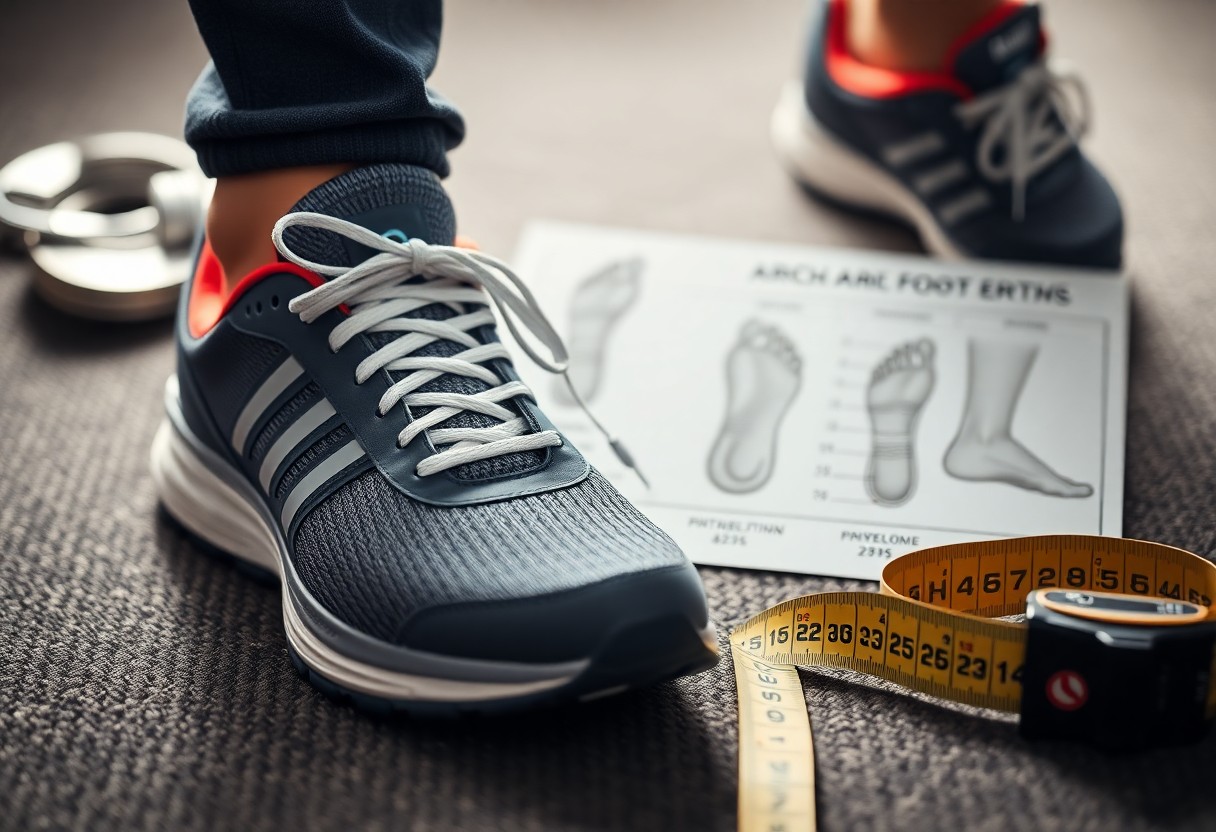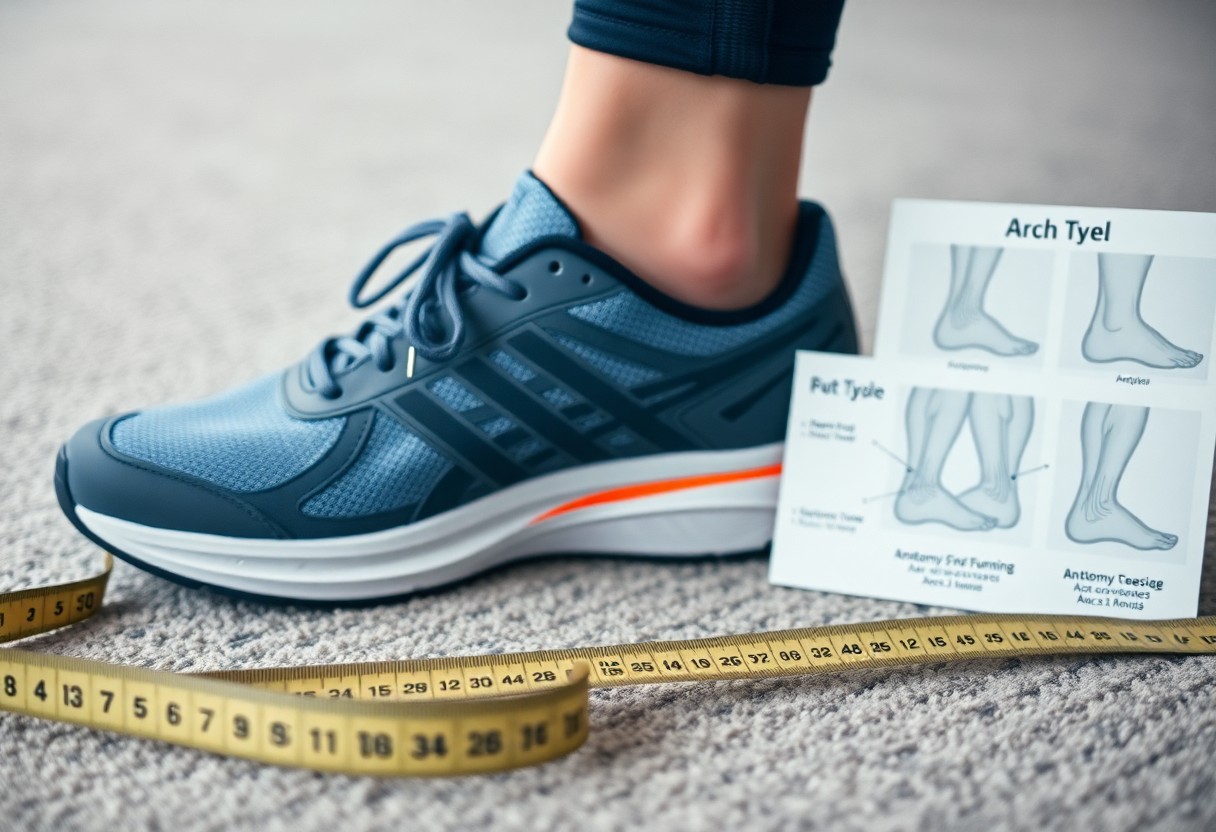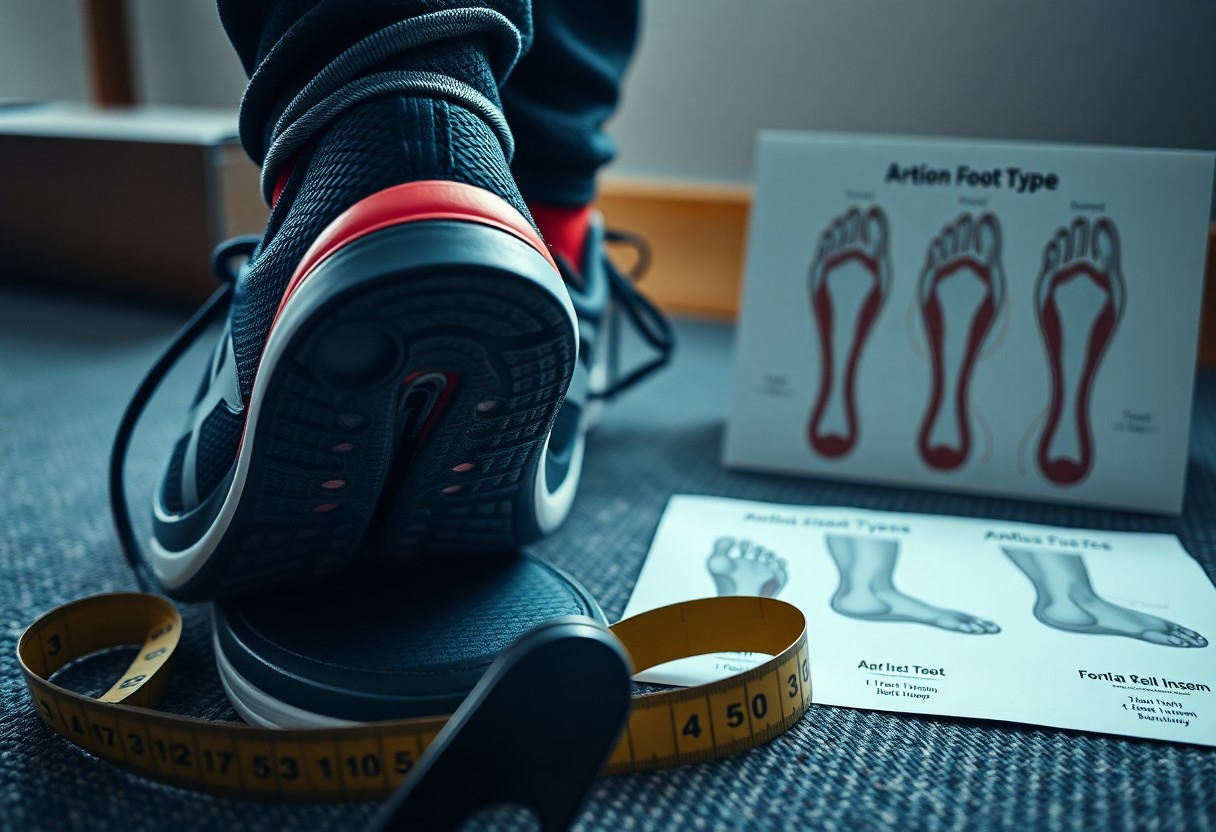Providing the right support for your feet doesn’t necessarily mean adding arch support to your footwear. Surprisingly, most people do not actually need arch support in their shoes. In fact, scientific research suggests that forgoing arch support can improve the strength of your foot muscles. Over time, constant reliance on artificial supports may lead to muscle weakness. The human foot is naturally designed with arches that flex and adapt to various surfaces, and restricting this natural function with rigid supports could negatively impact your long-term foot health. This detailed article aims to shed light on the science surrounding arch support, empowering you to make educated choices for your foot health.

Uncovering the Historical Development of Arch Support in Footwear
The natural support system of your feet has played a crucial role in the evolution of footwear design for centuries. The concept of arch support gained significant attention in the 1920s when Dr. William Scholl introduced commercial orthotics. Before this innovation, people relied on the inherent strength and flexibility of their feet. Understanding this historical context provides valuable insight into how our perceptions of foot health have transformed over time.
Tracing the Evolution of Traditional Footwear Practices
The history of footwear illustrates that ancient civilizations primarily used simple, flat sandals or often went barefoot. Such practices promoted natural foot development and strength. Our ancestors’ feet remained robust and flexible without the influence of artificial supports, as shown in studies of indigenous groups that maintain traditional footwear practices. This perspective emphasizes the critical function of natural foot mechanics in preserving foot health.
Analyzing Modern Standards in the Footwear Industry
By the mid-20th century, particularly during the 1950s, shoe manufacturers began incorporating built-in arch support as a fundamental feature of many footwear options. Today, the majority of modern shoes are designed with structured arch support, which has become an industry standard despite limited scientific evidence supporting its universal necessity. This trend reflects changing consumer expectations and industry norms, raising important questions regarding the influence of such designs on overall foot health.
Currently, approximately 70% of modern shoes include this arch support feature. However, studies published in the Journal of Foot and Ankle Research indicate that excessive dependence on arch support could lead to muscle weakness in your feet. As a result, many podiatrists now recommend incorporating barefoot walking and using minimally supportive shoes to help maintain natural foot strength.

Gaining Insight into the Complex Structure of Foot Architecture
Despite consisting of 26 bones, 33 joints, and over 100 muscles, your feet function most effectively when allowed to move freely. The arch of the foot acts as a self-supporting structure that becomes stronger with regular use but weaker when subjected to artificial support. Research indicates that 75% of individuals using conventional shoes with arch support experience reduced foot muscle activity, which can lead to diminished natural foot strength over time.
Discovering the Wonders of Natural Foot Mechanics
The natural design of your foot is an impressive feat of engineering, featuring an intricate system of self-support. Walking barefoot or in minimal shoes allows your feet to experience a full range of motion, enabling your arches to flex and strengthen organically. Studies show that people who frequently walk barefoot or choose minimal footwear develop stronger foot muscles and more stable arches compared to those who depend on supportive shoes. This highlights the critical importance of natural movement for optimal foot health.
Boosting Muscle Function and Development
Disrupting your foot’s natural movement can hinder its growth and development. Your foot muscles require regular engagement through natural activities to maintain their strength. Research published in Nature suggests that wearing shoes without arch support aids in developing stronger intrinsic foot muscles. This connection underscores the vital role of natural movement in achieving optimal foot health.
Moreover, it’s essential to understand the consequences of wearing shoes with built-in arch support. When these shoes are utilized, foot muscles may become less active, leading to potential weakness over time. Studies indicate that transitioning to minimal footwear can result in a substantial increase in foot muscle strength by up to 60% within eight weeks. However, it’s crucial to approach this transition with caution, particularly if you have existing foot conditions, to prevent injury.
Diving Deep into Research and Evidence Surrounding Foot Health
If you’re eager to understand the science behind arch support, numerous studies show that your feet can become stronger without the need for artificial support. Various investigations reveal that natural foot movement encourages improved muscle development and enhances arch stability, emphasizing the pivotal role of biomechanics in foot health.
Highlighting Significant Scientific Research on Arch Support
Among the most crucial research findings, a study published in Nature demonstrates that individuals who wear minimal footwear develop foot muscles that are 50% stronger compared to those who wear traditional supportive shoes. This evidence supports the idea that engaging in regular movement and exercise allows your feet to maintain their arches naturally.
Conducting a Comparative Analysis of Footwear Choices Across Different Populations
Contrasting the Experiences of Traditional and Minimal Footwear Users
| Traditional Shoe Users | Minimal Shoe Users |
| Exhibit higher rates of flat feet | Demonstrate superior arch strength |
| Show weaker foot muscles | Exhibit stronger foot muscles |
A comprehensive analysis of diverse populations reveals notable differences in foot health. Your foot structure can adapt significantly based on the types of shoes you choose to wear.
Insights from Global Population Studies
| Developed Countries | Barefoot Communities |
| 20% flat foot occurrence | 3% flat foot occurrence |
| Higher reliance on arch support | Natural arch strength |

Decoding the Support Paradox in Footwear Choices
Challenging commonly held beliefs, overdependence on arch support in shoes can undermine your feet’s natural strength. The human foot is intricately crafted with a complex array of muscles, tendons, and ligaments that work together to provide natural support. When artificial arch support assumes this responsibility, your foot muscles may become less engaged, resulting in gradual weakening.
Investigating the Dependency Cycle Associated with Arch Support
The continuous use of arch support establishes a harmful cycle. Feet can develop a reliance on external support, leading to muscle atrophy. Research indicates that 70% of individuals who regularly use arch support report increased discomfort when walking without their supportive shoes, highlighting the development of this dependency.
Exploring the Connection Between Muscle Weakness and Arch Support
Wearing shoes equipped with built-in arch support could weaken your intrinsic foot muscles by as much as 50%, according to research findings published in Nature. This weakening compromises your feet’s natural arch support system, potentially leading to conditions such as flat feet and other foot-related issues. It’s important to note that this muscle weakness can also affect your overall posture and balance, as weakened foot muscles can have a cascading impact on your body. Research indicates that individuals transitioning to minimal footwear often experience a 60% increase in foot muscle strength within six months.
Exploring Natural Alternatives to Enhance Foot Health
For those interested in moving away from traditional arch support, there are several natural alternatives that can help to improve foot strength. These methods emphasize allowing your feet to function as they were originally designed, promoting the development of stronger foot muscles and more stable arches through natural movement.
Adopting Minimalist Footwear for Unrestricted Natural Movement
Minimalist shoes, characterized by zero drop soles, wide toe boxes, and flexible materials, encourage natural foot movement. These designs allow your feet to function unhindered, supporting proper foot mechanics and fostering natural arch strength. Research suggests that regular use of minimal footwear can boost foot muscle strength by up to 60% through everyday activities.
Implementing Strategies for a Safe Transition to Minimal Footwear
When considering a shift to minimalist footwear, it’s essential to adopt a careful and gradual approach to ensure both safety and comfort. Begin by wearing minimal shoes for brief periods, gradually increasing the duration over several weeks. This method helps prevent overuse injuries as your feet adjust to their newfound freedom, facilitating a smoother transition.
A successful transition should ideally incorporate specific foot strengthening exercises. Start with 10-15 minutes per day in minimal shoes, adding an additional 5-10 minutes each week. Include exercises such as toe spreads and short barefoot walks on safe surfaces. This incremental approach allows you to reduce the risk of common transition injuries while effectively building your natural arch strength.
Recognizing Medical Considerations Critical to Foot Health
It’s vital to acknowledge that your foot health requires individualized attention. While natural foot movement is advantageous for muscle strength, certain medical conditions may necessitate specific support. Factors such as your foot structure, activity level, and any pre-existing conditions will greatly influence your ideal footwear needs.
Determining When Arch Support Is Essential
Contrary to popular belief, arch support is not universally necessary. However, individuals with acute injuries, severe flat feet, or specific medical conditions may benefit from temporary or permanent arch support. Research indicates that only 10-20% of the population genuinely requires specialized arch support for medical reasons, emphasizing the importance of personalized evaluations.
Guidelines for Comprehensive Professional Foot Health Assessments
To make informed choices regarding your footwear, consulting a foot health professional is advisable. Comprehensive assessments should include gait analysis, evaluation of foot structure, and review of medical history. These components are crucial in determining whether you need arch support or if transitioning to minimal footwear might be a viable alternative.
Support from a qualified professional can provide clarity and guidance for your foot health journey. A thorough assessment should include measuring arch flexibility, assessing muscle strength, and analyzing walking patterns. Your healthcare provider should also consider your daily activities and any past foot injuries to develop an effective treatment plan tailored to your unique needs.
Evaluating Your Footwear Choices and Their Impact on Foot Health
Your choice of footwear plays a significant role in influencing your overall foot health. Understanding that arch support is not essential for most individuals and may, in fact, weaken foot muscles over time is critical. Your feet possess innate strength and flexibility, functioning best when allowed to operate as nature intended. If you’re contemplating a transition to minimal footwear, initiating this process gradually will help your feet adapt effectively. The evidence strongly suggests that allowing your feet to function without artificial support can lead to stronger muscles and enhanced foot health for the majority. Always consider your personal needs and consult a foot health professional for specific concerns.
Common Questions Regarding Arch Support
Do healthy feet need arch support in shoes?
Most healthy feet do not require arch support in shoes. Research indicates that natural foot strength develops more effectively without artificial support. The muscles and arches of the foot function optimally when allowed to operate naturally. This aligns with studies on populations that frequently go barefoot or prefer minimal shoes, which show stronger foot muscles and fewer arch-related issues.
Can prolonged use of arch support weaken feet over time?
Yes, extended reliance on arch support can lead to weakened foot muscles. When artificial support takes over the function of foot muscles, these muscles become less engaged and gradually lose strength. This can create a cycle of dependency. Research published in Nature indicates that individuals who consistently wear conventional shoes with arch support tend to exhibit weaker foot muscles compared to those who choose minimal footwear.
Who might truly need arch support in their footwear?
Certain individuals with specific foot conditions, injuries, or medical issues may genuinely benefit from arch support. This includes those diagnosed with flat feet, specific foot injuries, or structural abnormalities. However, these situations should be assessed by a foot health professional capable of devising an appropriate treatment plan. The goal should be to restore natural foot function whenever feasible, rather than relying on permanent support.
The Article Arch Support: Essential Facts About Shoe Necessities Was Found On https://limitsofstrategy.com


This perspective on arch support is really thought-provoking! I’ve often been told that I should prioritize arch support to prevent discomfort, but it’s intriguing to consider the idea that over-reliance on these supports might weaken the intrinsic strength of my feet.
It’s intriguing, isn’t it? All this fuss about arch support makes you wonder if our arches are secretly plotting against us, or if we’ve just gotten a bit too cozy with the idea of foot crutches. I’ve often thought about it in terms of balance—kinda like how we rely on our morning coffee to function but then end up with a caffeine dependency that leaves us jittery when we try to cut back.
You raise a great point about the balance between comfort and natural foot strength. Many people focus on arch support as a kind of quick fix for discomfort, which makes sense at first. But it’s interesting to think about how our feet are designed to work. Some research suggests that relying too heavily on external support can indeed lead to weaker foot muscles over time, much like how relying on crutches can weaken your legs.
Your insights into the role of arch support in footwear were both thought-provoking and enlightening. It’s refreshing to see a discussion that questions conventional wisdom surrounding foot health, particularly the entrenched belief that we need arch support to maintain proper function and comfort.
It’s great to hear your thoughts on the role of arch support and the conventional beliefs around foot health. The debate about whether we truly need arch support invites deeper questions about how our bodies function naturally. Some argue that the foot is designed to adapt, suggesting that too much support can inhibit its natural mechanics.
I appreciate your perspective on the role of arch support in footwear. It’s interesting how many long-held beliefs about foot health seem to be under scrutiny now. I grew up hearing that arch support was essential, especially from family and friends who experienced foot pain or discomfort. However, as I’ve read more about different approaches to foot health—like those promoted by minimalist footwear advocates—it seems that there’s more nuance to the conversation than I initially believed.
This discussion about arch support is quite enlightening. I remember when I first encountered the idea that not everyone needs added support in their shoes. Like many, I grew up believing that arch supports were essential for foot health, especially after experiencing discomfort during long walks. However, after switching to more minimalist footwear, I noticed not just improvements in comfort but also in my foot strength over time.